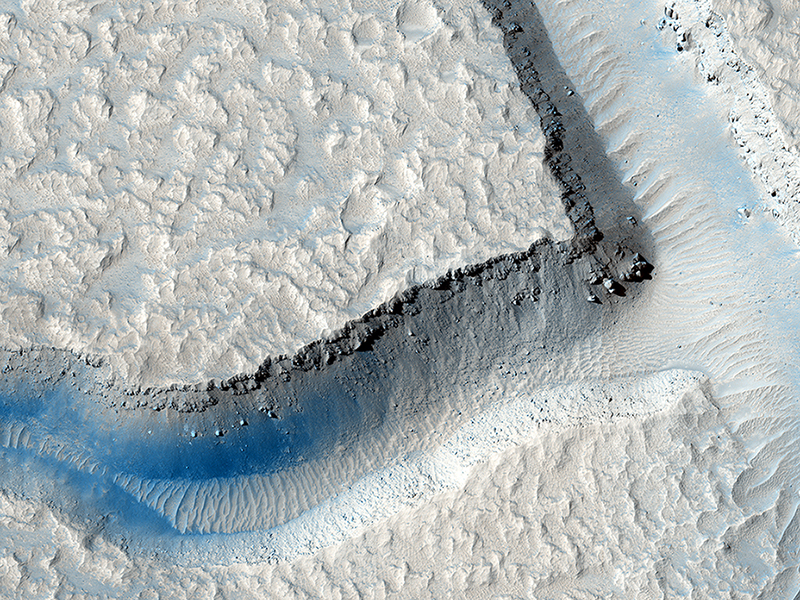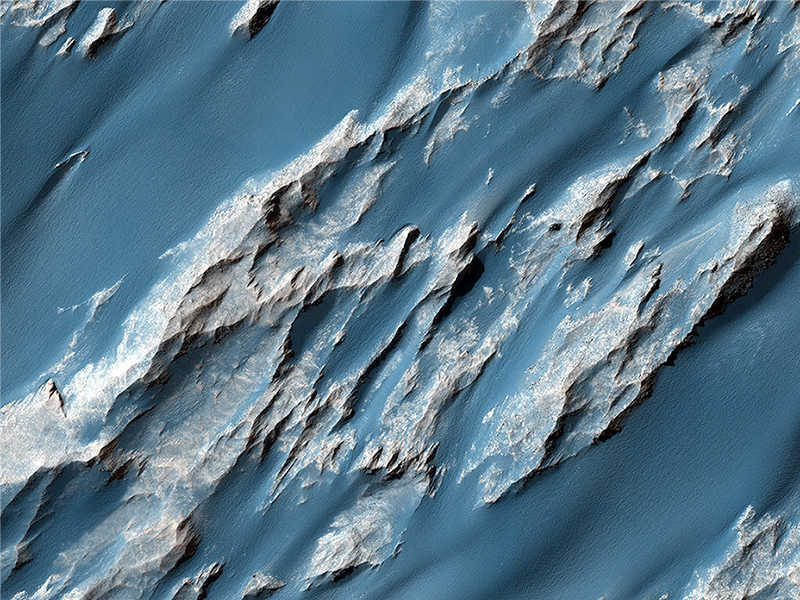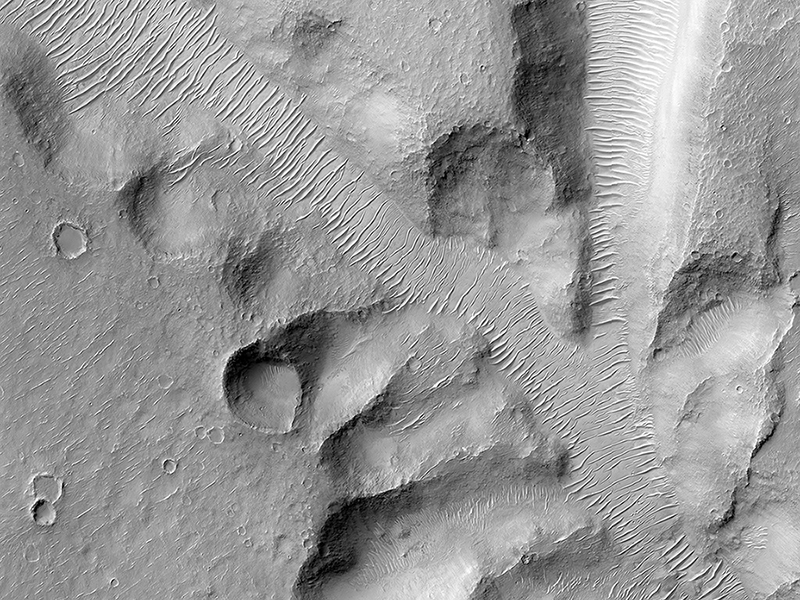HiRISE Science Team wrote:Martian Intersection (ESP_033591_1805) (HiClip)
In this image, we see an intersection of several fractures on the floor of Echus Chasma. One "sector" appears to have been filled by a more recent viscous lava flow.
Echus Chasma is considered to be the water source region that formed Kasei Valles, a large valley that extends thousands of kilometers to the north. HiRISE may help determine the relative roles of lava and water in the region.
HiRISE Science Team wrote:A Textured Mesa (ESP_033564_1405) (HiClip)
Also imaged by MRO's Context Camera, this observation shows one of two odd, rounded mesas with a knobby/pitted texture.
This mesa may be the last remnants of a formerly more extensive geologic unit. Given the particular pitted texture, this formation could be ice-rich.
High resolution images can greatly help to characterize the surface texture and allow us to compare other mid-latitude-type landforms, which may have some connection with ice and sublimation degradation processes.
Matthew Chojnacki wrote:Hydrated Sulfate Landslides in Ophir Chasma (PSP_007535_1755) (HiClip)
Giant landslides in Ophir Chasma host a variety of geologic surfaces and mineralogies. Some possess a variety of hydrated sulfate minerals that formed in the presence of partially acidic liquid water.
This image of an ancient, approximately 3 billion year-old landslide shows two distinct surface albedos, which are proportions of reflected light. These different toned surfaces also mark a transition from one sulfate mineralogy to another and variations in surface evolution.
The upper slopes to the north are light-toned due to an abundance of hydrated sulfate minerals and bright surface dust. The surfaces that make up the southern portions of the landslide are darker in tone due to the greater frequency of dark sediment that form strings of sand drifts. Additionally, the underlying units of bedrock consist of darker minerals with less hydration then those to the north, implying a change in the ancient aqueous environments that formed them.
Ginny Gulick wrote:Nirgal Vallis Tributaries (ESP_033814_1525) (HiClip)
Nirgal Vallis is one of the largest and longest valley networks on Mars (approximately 400 kilometers in length). Oriented roughly east-west and located north of the Argyre impact basin, its western region contains numerous short, theater-headed tributaries that merge into a long, sinuous, and deeply entrenched main valley that extends eastward to Uzboi Vallis.
The area in this image (centered at -27.1730 latitude, 313.7340 longitude) is of the western most tributaries. Valley heads are steep and abrupt with blunt terminations. Although Nirgall Vallis formed long ago, likely by flowing water, abundant wind-blown sediments transformed into the dune fields that now line the valley floors. However, the distinctive valley pattern shape with steep walls and flat floors led many to propose that ground water flowed out to the surface along the valley heads and walls of the numerous tributaries. This process, known as sapping, begins with ground water flowing along subsurface fractures or permeable layers and carrying out sediments with it as it emerges at the cliff face.
Eventually, the loss of support from beneath undermines the cliff face, causing it to slump into the valley. With continued sapping, tributaries grow progressively in a headward direction. This kind of erosion is common in the Colorado Plateau of the Southwestern United States and helped form the distinctive shape of the Grand Canyon. Wrinkle ridges intersecting several tributaries may have provided additional avenues for ground water flow into the valley system.
This is a stereo pair with ESP_034091_1525.
Credit: NASA/JPL/University of Arizona
<< Previous HiRISE Update



